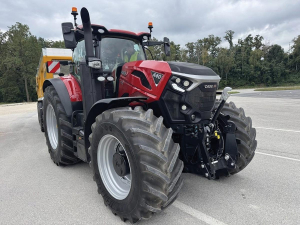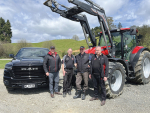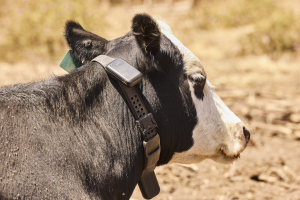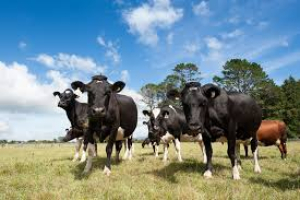Currently available in New Zealand in 250, 270, 300 and 400 horsepower options, Case IH’s Optum Series is being readied for expansion with the announcement of three new additional models, the 360, 390 and 440.
Said to be completely new, apart from the cabin, the company appears to have recognised that while the Magnum Series offering 310, 340, 380, and 400hp is an extremely capable prime mover – especially for cultivation – farmers and contractors are asking for a more road friendly, versatile workhorse.
While the new series has a longer wheelbase than Magnum (it is 100mm shorter overall), the project, started in 2021, was to build a lighter, more compact, faster vehicle, also more suited to working with front-mounted kit.
Up front, a new independent front suspension layout uses a CNH axle which offers anti-roll, pitch and dive alongside 250mm of travel. The axle incorporates the brakes from the rear end of a Maxxum, for increased stopping power, while the exhaust brake (offering about 28% braking effect) has been complemented by a decompression system on the engine, that opens valves, rather than allowing the exhaust gas pressure to push the piston down, which results in 166% braking.
Rather than using a chassis, the sump of the 8.7-litre, six-cylinder FPT Cursor 9 engine forms the structural component, reducing weight, but also helping the bigger Optums turn in a 14.5m circle. Both SCR and a DOC are used for Stage 5 emissions, with service intervals at 750 hours to tie in with the 1500 hours transmission and hydraulic system intervals.
Equipped with a larger version of the 4×2 CVXDrive box found in the existing Optum, one key difference is the ability to travel at 60km/h at 1900rpm, depending on local regulations.
The bigger Optums are available with larger tyre options, with the option of a central tyre inflation system, using a gear driven compressor, capable of delivering one bar inflation in five minutes. The system offers two field and one road pressure settings. Working weight of the flagship Optum 440 is around 12,450kg with a max permissible weight of 19 tonnes (depending on local markets).
At the business end of the tractor, rear pto speeds are offered with 540E/1000 or 1000/1000E formats, while the front pto is also a two-speed 1000/1000E unit. Rear hydraulics are 220 l/ min output as standard, with the option of an additional 140 litre/min pump for a total output of 360l/min. With the twin pump arrangement, one supplies oil to the left side couplers, the other for the right. The layout allows one pump to be high pressure, the other low pressure as required.
Although offering the same structure, cabins have been upgraded to include suspension options and other improvements such as walk-in entry steps, integrated toolbox storage, and a built-in water tank hand-washing.
Production is expected to commence in mid-2026, although at this stage, pricing and availability are yet to be confirmed for ANZ.










